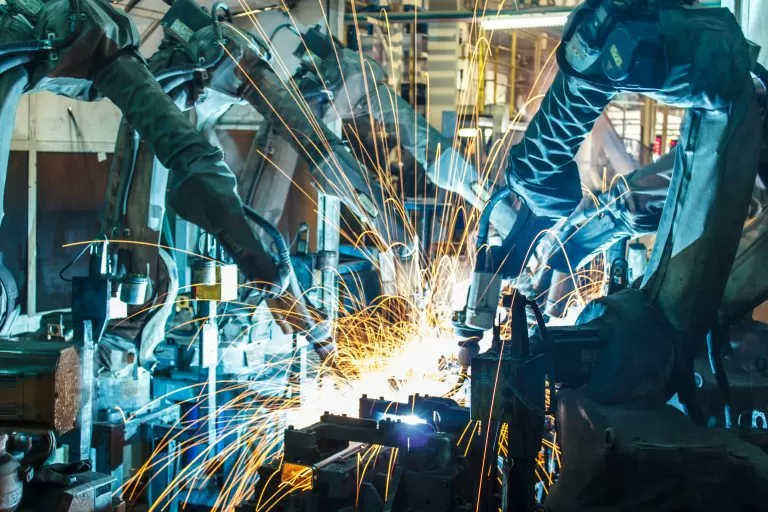Check out our White Paper Series!
A complete library of helpful advice and survival guides for every aspect of system monitoring and control.
1-800-693-0351
Have a specific question? Ask our team of expert engineers and get a specific answer!
Sign up for the next DPS Factory Training!

Whether you're new to our equipment or you've used it for years, DPS factory training is the best way to get more from your monitoring.
Reserve Your Seat Today
With the rise of the Internet of Things and the coming age of 5G connectivity, much thought and investment has gone into developing communications networks within industrial settings. As more and more data is collected, industry managers can make more informed decisions. This will improve maintenance schedules, production yields, and future best practices.
Realistically, however, not every piece of equipment speaks the same language. Many different communication protocols have been used, and pieces of equipment purchased over the years from diverse manufacturers may not be able to communicate.
Industrial electronics often communicate using a variation of Modbus protocols, but may also communicate using DNP3 or SNMP. So, industrial companies must find a way to systemize their communication protocol automation in order to create a beneficial equipment communications network.
One of the most significant benefits derived from working with networked, communicating industrial equipment is lessening the necessity for manual oversight. Continuous manual oversight over each piece of equipment used in an industrial setting drives up costs and lowers efficiency. Mobile oversight- - sending employees on rounds to check equipment - creates gaps in monitoring in which costly accidents can occur.
You can avoid these issues by implementing an effective communications network for industrial equipment. Networked equipment can provide constant data on their condition. When a problem arises, networked equipment can send an alert. This alert informs the appropriate personnel, who can swiftly take corrective action.
In order for the network to function, equipment communications must be mutually intelligible.
If a holding tank reports falling fluid levels in Modbus to a central master which only understands SNMP, nobody will know to go plug the leak. A system which can convert communication protocols automatically is the solution.
Intermediary devices, some of which are known as master stations, can make this conversion into a more automated, streamlined process. These devices receive transmissions from industrial electronics or dedicated remote terminal units (RTUs).
The information is then forwarded in a compatible protocol to a central "MoM" (Master of Masters). Intermediary master stations can convert Modbus communications into DNP3, or DNP3 communications to Modbus, and they can convert either of these to SNMP. The two protocols involved are limited only by the manufacturer's software engineering team.
RTUs are external monitors which collect environmental and system data on industrial equipment. If the RTU sends Modbus to its master station, that master station can convert the alert to SNMP, so the top-level management software can read it. This automatically solves the problem of different communication protocols.
Master stations serve another important function as well. They act as filters, processing the background noise of operating equipment. Only situations that require consideration and action make it through the filter.
Rather than have employees receive an email every time data is received - which would result in a constant flood of background data - employees can sort and categorize alerts visually.
By navigating their top-level management interface via a web browser, employees can quickly distinguish between properly working equipment, equipment nearing maintenance intervals, and equipment under emerging or actual failure conditions. This enables the smart dispatch of company resources, increasing equipment uptime.
Additionally, master stations can provide flexible reporting. Using Modbus protocols, master stations have a master/slave relationship with their networks. This means that RTUs and equipment only send alerts when they are queried by the master stations.
With only a few alerts programmed, a full query cycle can take seconds. With many more, it can take half an hour or more.
Knowing this, employees using the central manager can command the Modbus-based master to alter its query patterns to prioritize certain alerts. On hot days, for instance, internal temperature and cooling system checks can take precedence. This provides structure to a tide of information, channeling data down the most effective paths.
Industrial operations have much to gain from networking their equipment. Being able to monitor equipment conditions in real-time informs leaders for smart management and maintenance.
Doing so without hiring an army of technicians keeps costs low and helps companies stay competitive.
Master stations are the cornerstone of communication protocol automation strategies. Without master stations, industrial equipment networks would be an undifferentiated sea of babble - unintelligible and overwhelming.
By using a master station and these protocol automation strategies, you'll ensure the proper conversion of various communication protocols into a format readable by a central management server. All parts of your operation will work together seamlessly.
DPS Telecom has reliable experience in the field of communication protocol automation. Our powerful master stations can simplify the most complex industrial site. To learn more, get a quote today!
Image Courtesy Shutterstock